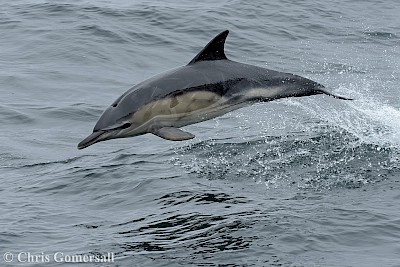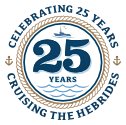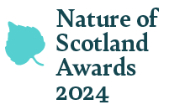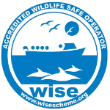 Conservation charity the Hebridean Whale and Dolphin Trust said that from its research yacht Silurian, which was used in the BBC TV programme Blue Planet, volunteers and scientists spotted 2,303 common dolphins, 42 bottlenose dolphins and 94 Risso’s dolphins in its 2016 expeditions.
Conservation charity the Hebridean Whale and Dolphin Trust said that from its research yacht Silurian, which was used in the BBC TV programme Blue Planet, volunteers and scientists spotted 2,303 common dolphins, 42 bottlenose dolphins and 94 Risso’s dolphins in its 2016 expeditions.
Trust director Alison Lomax said: “The impressive range of species documented in our at-sea surveys last year is a powerful reminder that Scotland’s west coast ocean environment is home to remarkable marine life.
The figures for all three species are the highest recorded in the charity’s annual surveys.
Average annual figures over the last 14 years recorded 463 individual common dolphins, 14 bottlenose dolphins and 12 Risso’s dolphins. For common dolphins, records range from zero in earlier field seasons to 1,862 during 2007.
Dr Lauren Hartny-Mills, science officer at the trust, said: “The reasons for the high number of sightings of these charismatic dolphin species and the broader effects on the marine environment and other species remain unclear.
“But the intriguing findings highlight the importance of ongoing monitoring and research to strengthen our understanding of what is taking place in Hebridean waters and to ensure well-informed conservation action.”
The latest findings came during a research season lasting from May to October, as part of the trust’s citizen science project monitoring whales, dolphins and porpoises – collectively known as cetaceans – and basking sharks in the area.
Last year saw 71 volunteers work with marine scientists on visual surveys and acoustic monitoring with underwater microphones or hydrophones, and identifying individual cetaceans through photography.
The charity, based on the Isle of Mull, now holds data from a surveyed area measuring more than 95,000km.
It aims to pass the 100,000km milestone during 2017 and recruits volunteers to work for two-week periods between April and September.
“Long-term scientific studies of this globally-important habitat and its inhabitants are crucial if we are to ensure a secure future for the Hebrides’ spectacular cetaceans.”


























Always wanted to go to the Hebrides and this was a fantastic way of doing it. The boat was very comfortable and James and Ritchie we’re masters at keeping it that way. Great wildlife spotting - thank you Lynsey and don’t forget to enter that amazing dolphin photo into a competition! Calm, capable Kat with the beautiful soft accent, and cook extraordinaire Emma with the wide smile - all of you guaranteed that the trip was extra special. Was a heavenly respite from the cares of the world. Thank you all involved.
Marian Root: 29 May 2021Private Charter 6 Nights